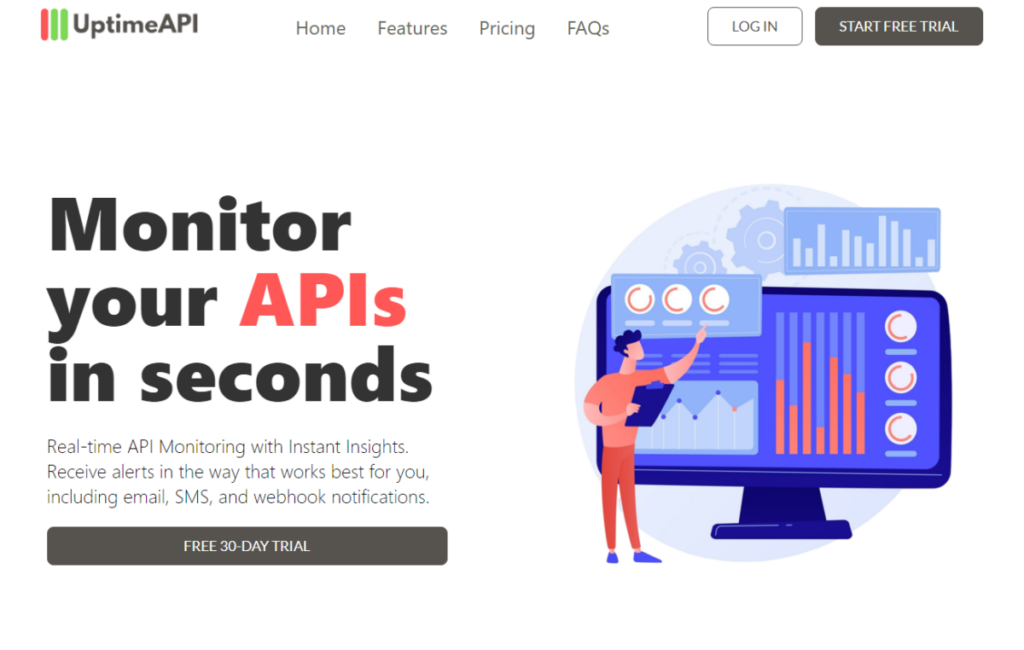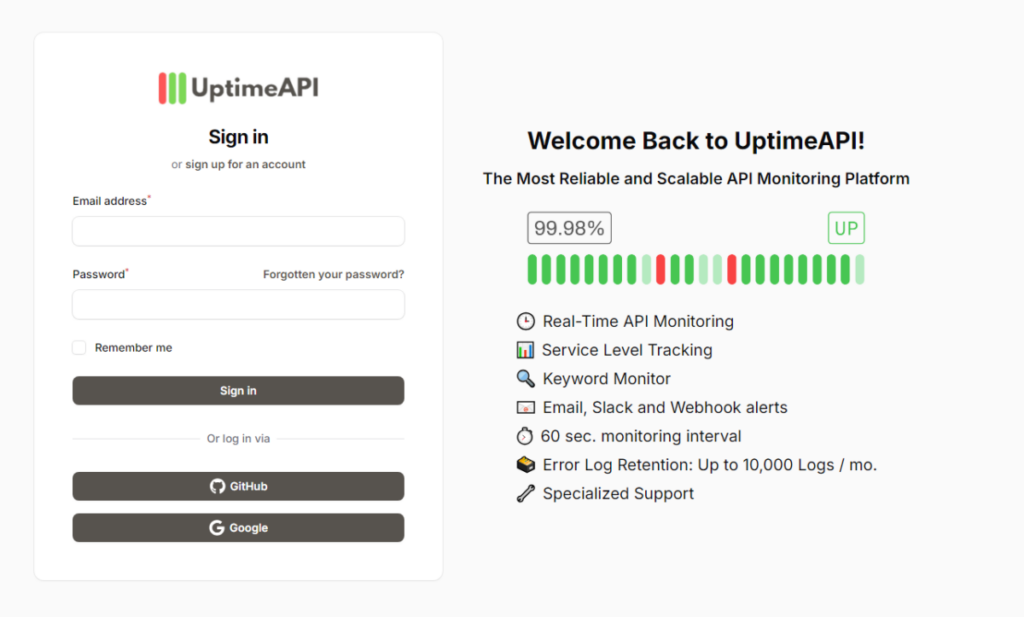Making sure APIs operate at their best becomes increasingly important as companies grow and the need for linked services rises. API performance monitoring is becoming an essential component of creating reliable apps that can expand and satisfy user demands in today’s developer-centric society. Developers must be certain that their APIs are operating effectively, managing spikes in demand without malfunctioning, and reliably delivering real-time data. This is where the Uptime API is useful.
Uptime API: The Ideal Tool for Developers
Specifically created for developers, Uptime API is a complete solution for monitoring API performance. Uptime API gives developers all the tools they need to make sure their APIs are operating as efficiently as possible, including customisable alert systems, real-time monitoring features, and comprehensive performance statistics. Let’s examine some of the main characteristics that make it the best tool for developers.
The Uptime API’s real-time monitoring capabilities are among its most crucial features. Uptime API provides continuous, real-time monitoring of API performance, in contrast to standard monitoring systems that only assess performance at predetermined intervals. As a result, developers can see how their APIs are operating in real time and react swiftly to any problems that may come up.
For developers operating in sectors where even a few seconds of unavailability can cause major disruptions, real-time monitoring is particularly crucial. Developers may guarantee that their APIs are always up and running, providing consumers with dependable and consistent performance, by utilizing Uptime API.
The API provides developers with customisable alarm systems that inform them of any performance difficulties in addition to real-time monitoring. When something goes wrong, developers can be informed right away by sending alerts via webhooks, SMS, or email. Developers may tailor their alerts with the API to highlight the metrics that are most important to their company, such latency, error rates, or response times.
The Significance of API Performance Monitoring for Developers
APIs are the foundation of many contemporary applications, including mobile apps, e-commerce platforms, and cloud-based SaaS systems. They are in charge of responding to inquiries, sharing information, and making sure that various systems can speak with one another instantly. Even while APIs are essential, performance problems including sluggish response times, excessive latency, and outages can still occur. A poor user experience might arise from an API that is unable to provide prompt responses or that goes unavailable, which can cost a business money and reputation.
API performance monitoring is crucial for developers since it guarantees that APIs are operating effectively, giving users a flawless experience, and preventing expensive downtime. By keeping an eye on an API’s performance, developers may monitor important metrics like error rates, latency, and uptime. By keeping an eye on these indicators, developers may identify problems early on and fix them, enhancing the overall functionality and dependability of their apps.
Additionally, in the fast-paced world of today, where consumers want immediate access to data and services, any interruption or delay can negatively affect a company. By keeping these vital systems operational and online, API performance monitoring helps to avoid interruptions that can impair user experience.
For developers who want to keep an eye on and improve their APIs, Uptime API offers a complete solution. With the help of its real-time monitoring, immediate alarms, and comprehensive performance insights, developers can maintain the efficiency and smooth operation of their APIs. Developers can make sure their APIs are always online, react to queries fast, and provide a consistent user experience by utilizing this API.



